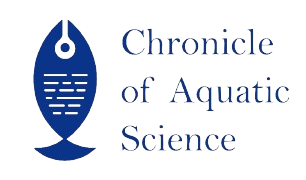| File | Action |
|---|---|
| Chandra et al., 2023 | Download |
- 919088951040 call us
- chronicleofaquaticscience@gmail.com Mail us
CoAS_V1IS2_01
Popular Article
Application of Antibiotics in Aquaculture: Effects on Aquatic Life and Human Health
Ishwar Chandra*, Durgesh Kumar Verma, Narendra Kumar Maurya, Ajay Kumar Verma and Rajesh Jaiswal
Abstract
The rapid expansion of aquaculture has resulted in several developments that are harmful to human and aquatic animal health, as well as the environment. People use various prophylactic antibiotics indiscriminately in aquaculture, primarily in developing countries, to prevent various bacterial infections caused by sanitary flaws in fish and shellfish farming. Furthermore, the use of a wide range of non-biodegradable human antibiotics remains in the aquatic environment. It directly causes antibiotic-resistant bacteria to develop, and transferable resistance genes can be transferred to diseasecausing bacteria, resulting in antibiotic-resistant infections in humans, fish, and other aquatic animals. The more antibiotics that are used, the more likely it is that antibiotic-resistant bacteria will win the battle for the survival of the fittest at the bacterial level. The presence of antibiotic compounds in terrestrial and aquatic environments is of greater interest worldwide due to their emergence as dangerous pollutants for the environment and human health.
Keywords
Aquaculture, Antibiotics, Antibiotic Resistance and Aquatic Animal Health
References
Romero, J., Feijoó, C.G. and Navarrete, P., 2012. Antibiotics in aquaculture–use, abuse and alternatives. Health and environment in aquaculture, 159, pp.159-198. Rasul, M.G. and Majumdar, B.C., 2017. Abuse of antibiotics in aquaculture and it’s effects on human, aquatic animal and environment.
The Saudi Journal of Life Sciences, 2(3), pp.81-88. SJLS-2381- 88.pdf (saudijournals.com) Vignesh, R., Haq, M.A. and Srinivasan, M., 2011. Biodegradation prospective of microbes. International Journal of Environmental Sciences, 2(2), pp.741- 754. Serrano, P.H., 2005.
Responsible use of antibiotics in aquaculture (Vol. 469). Food & Agriculture Org.
Rijkers, G.T., Van Oosterom, R. and Van Muiswinkel, W.B., 1981. The immune system of cyprinid fish. Oxytetracycline and the regulation of humoral immunity in carp (Cyprinus carpio). Veterinary immunology and immunopathology, 2(3), pp.281-290.
Nakajima, T., Suzuki, M., Harada, K., Inoue, M. and Mitsuhashi, S., 1983. Transmission of R plasmids in Vibrio anguillarum to Vibrio cholerae. Microbiology and immunology, 27(2), pp.195-198.
Grondel, J.L., Gloudemans, A.G.M. and Van Muiswinkel, W.B., 1985. The influence of antibiotics on the immune system. II. Modulation of fish leukocyte responses in culture. Veterinary immunology and immunopathology, 9(3), pp.251-260.
Jacoby, G.A., 2005. Mechanisms of resistance to quinolones. Clinicalinfectious diseases, 41(Supplement_2), pp. S120-S126.
Cabello, F.C., 2004. Antibiotics and aquaculture in Chile: implications for human and animal health. Revista medica de Chile, 132(8), pp.1001-1006. 10.4067/s0034-98872004000800014
Austin, B. and Al‐Zahrani, A.M.J., 1988. The effect of antimicrobial compounds on the gastrointestinal microflora of rainbow trout, Salmo gairdneri Richardson. Journal of fish biology, 33(1), pp.1-14. https://doi.org/10.1111/j.1095 8649.1988. tb05444.x
- Published online
- 30th July, 2023
How to Cite the Article
Chandra et al., (2023) Application of Antibiotics in Aquaculture: Effects on Aquatic Life and Human Health. Chronicle of Aquatic Science 1(2):1-7
Copyright
This is an open-access article distributed under the terms of the Creative Commons Attribution License (CC BY). The use, distribution or reproduction in other forums is permitted, provided the original author(s) and the copyright owner(s) are credited and that the original publication in this journal is cited, in accordance with accepted academic practice. No use, distribution or reproduction is permitted which does not comply with these terms.

Chandra et al., 2023


